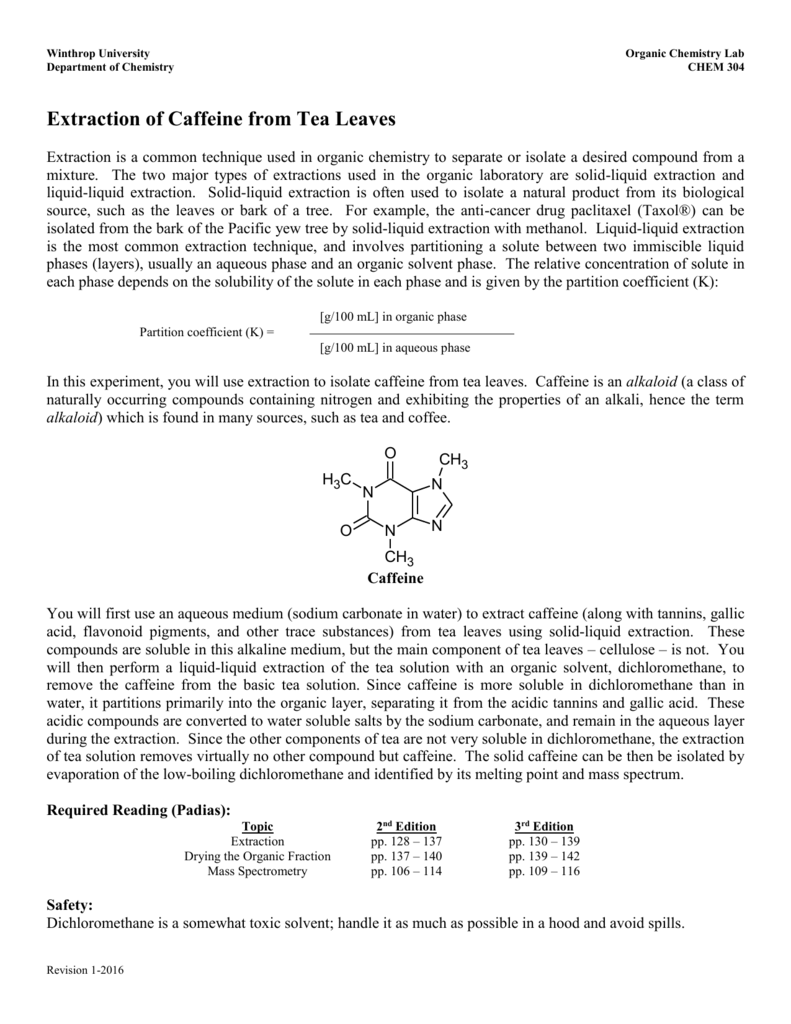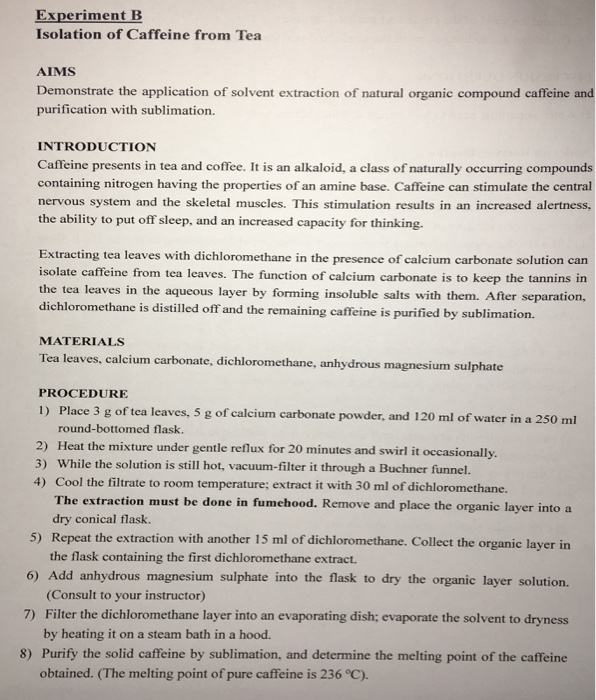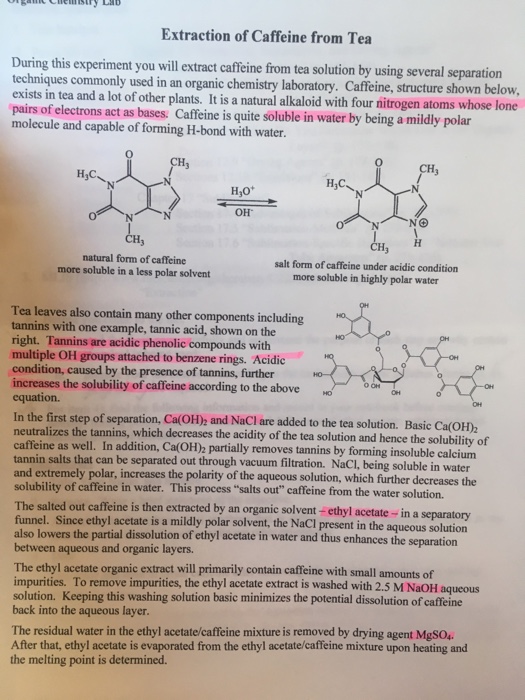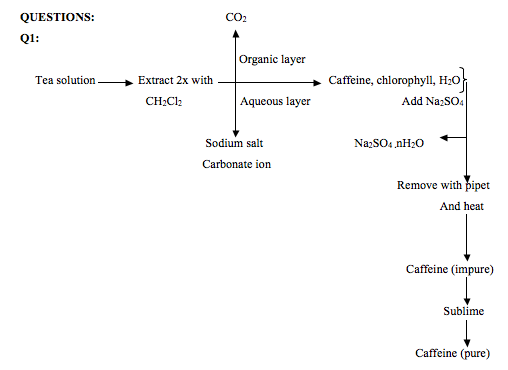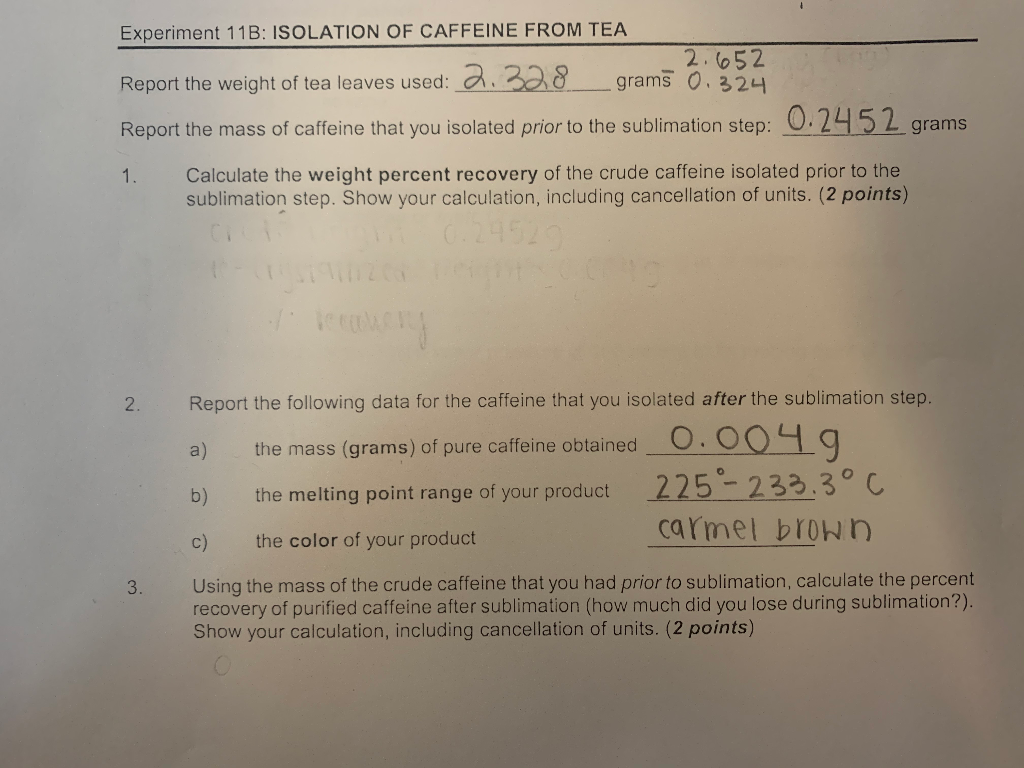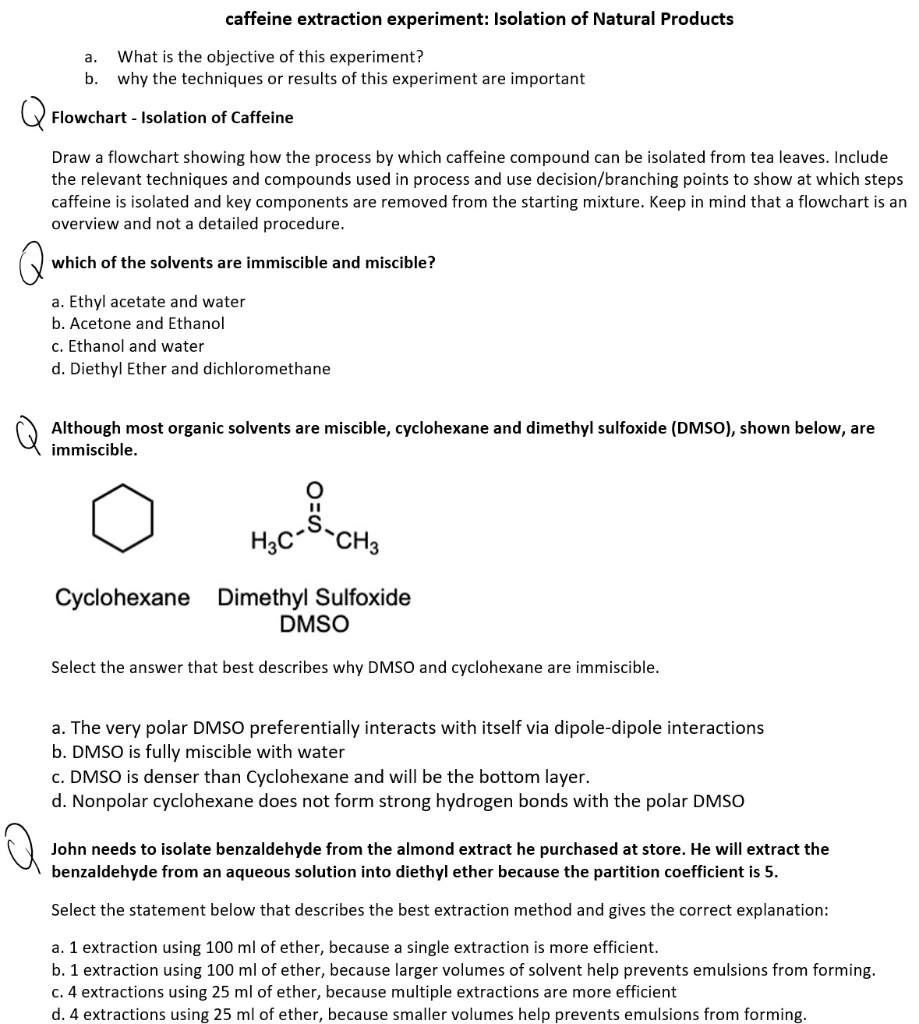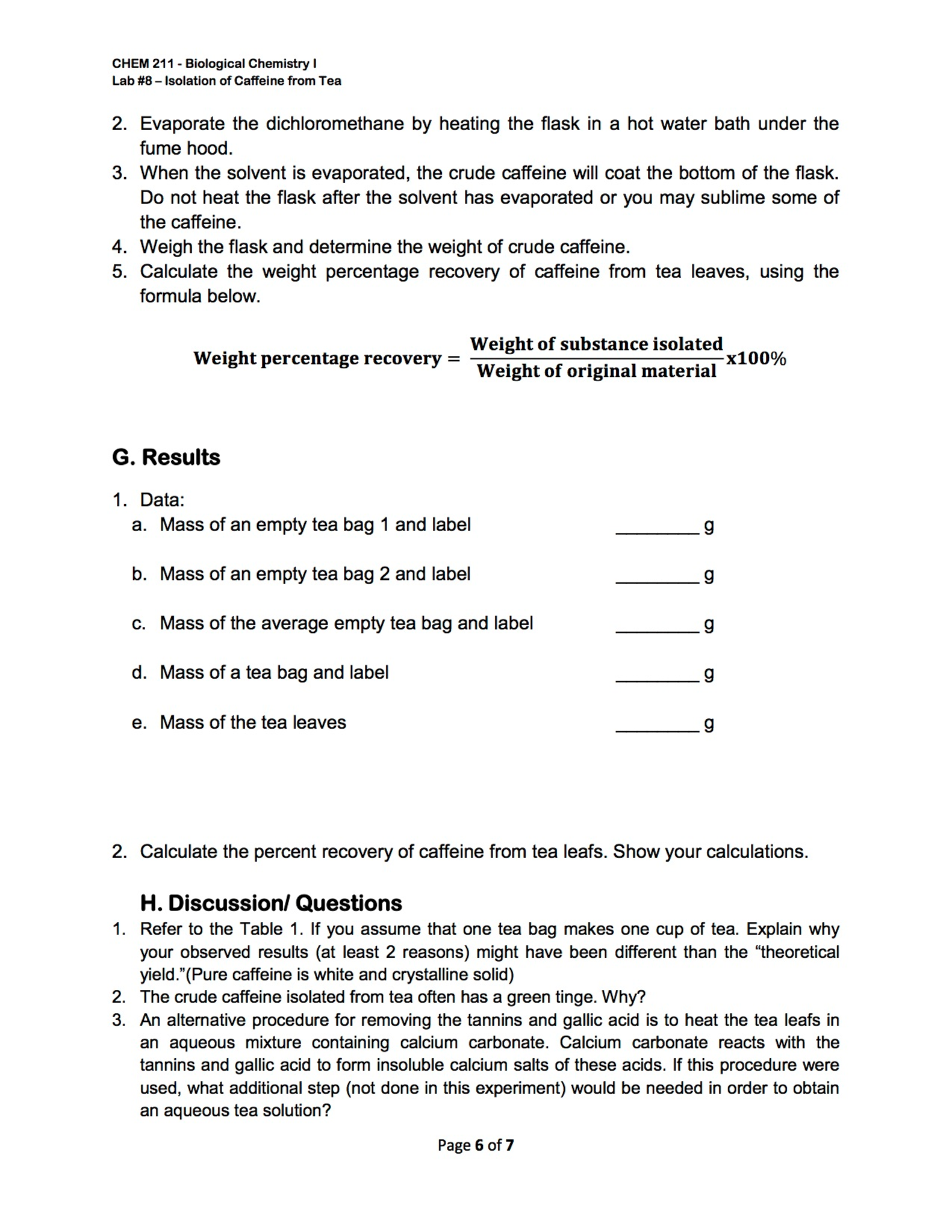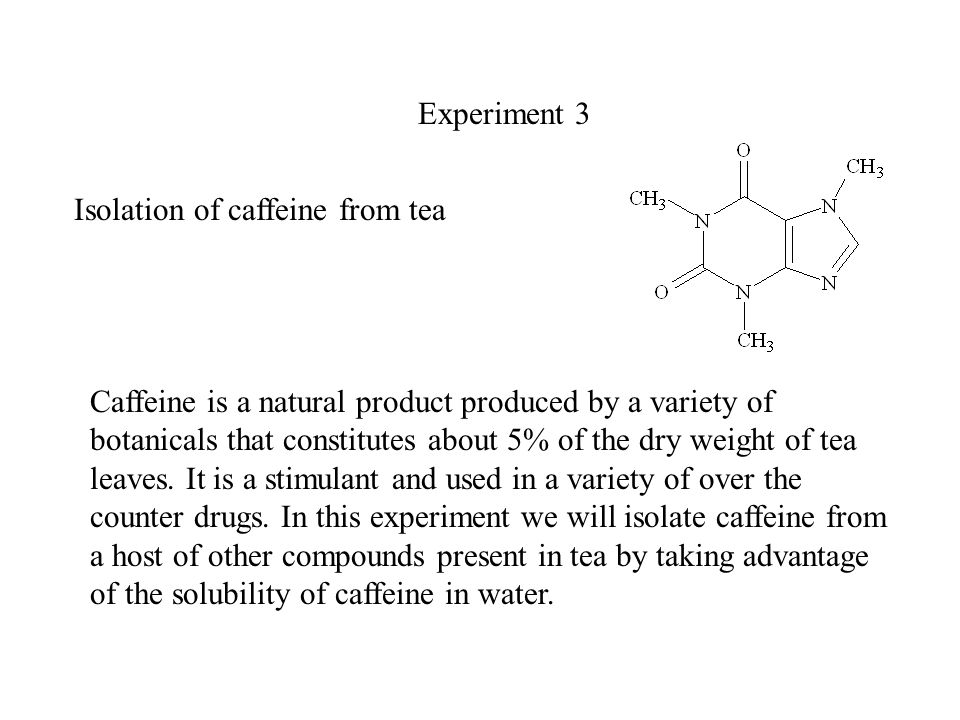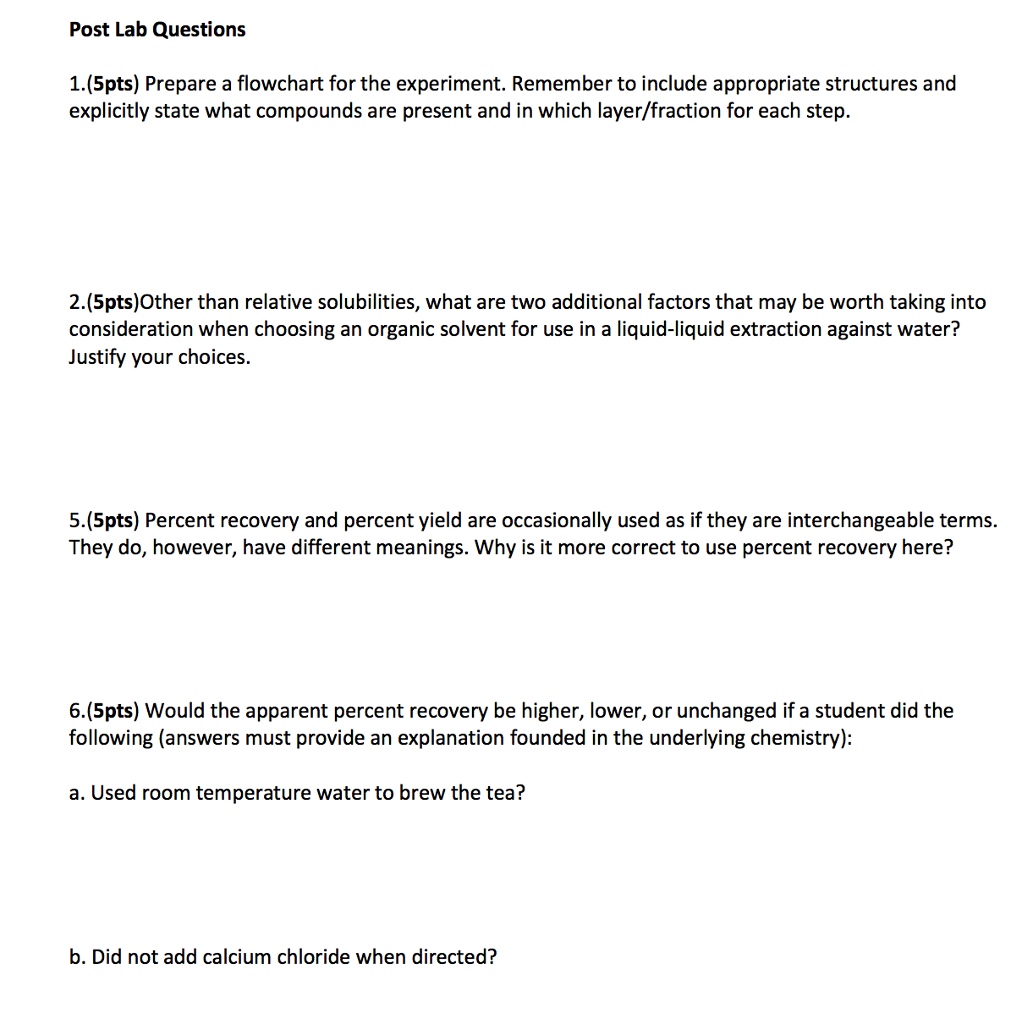Isolation Of Caffeine From Tea Leaves Experiment
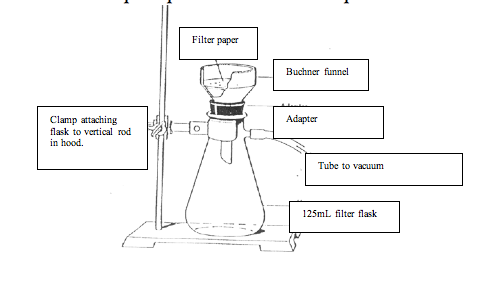
In the experiment caffeine is extracted from lipton yellow label tea leaves after.
Isolation of caffeine from tea leaves experiment. Subjecting it to boiling extraction and sublimation. Soluble in boiling water at 666 mg ml 6. The compound an alkaloid is polar and is. This is essentially the same procedure used to decaffeinate drinks such as coffee and tea.
To start a 150 ml beaker containing 50 ml deionized water and 2 boiling stones was prepared to. After cooling the tea extract it was transferred to a. In this experiment students will use an organic solvent to extract the organic components namely caffeine from tea. Procedure add about 10 0 g of tea leaves to around 100 ml of water in a 400 ml beaker cut open the tea.
This allows the isolation of single components from a mixture. Place the tea back into the bags and staple the bags shut. Isolation of caffeine from tea leaves introduction. Weigh the total contents to the nearest milligram and record this weight.
Caffeine is an alkaloid stimulant with a cyclic backbone structure analogous to the purine structures of. This process known as liquid liquid extraction is a basic operation that should be mastered in the organic chemistry laboratory.
